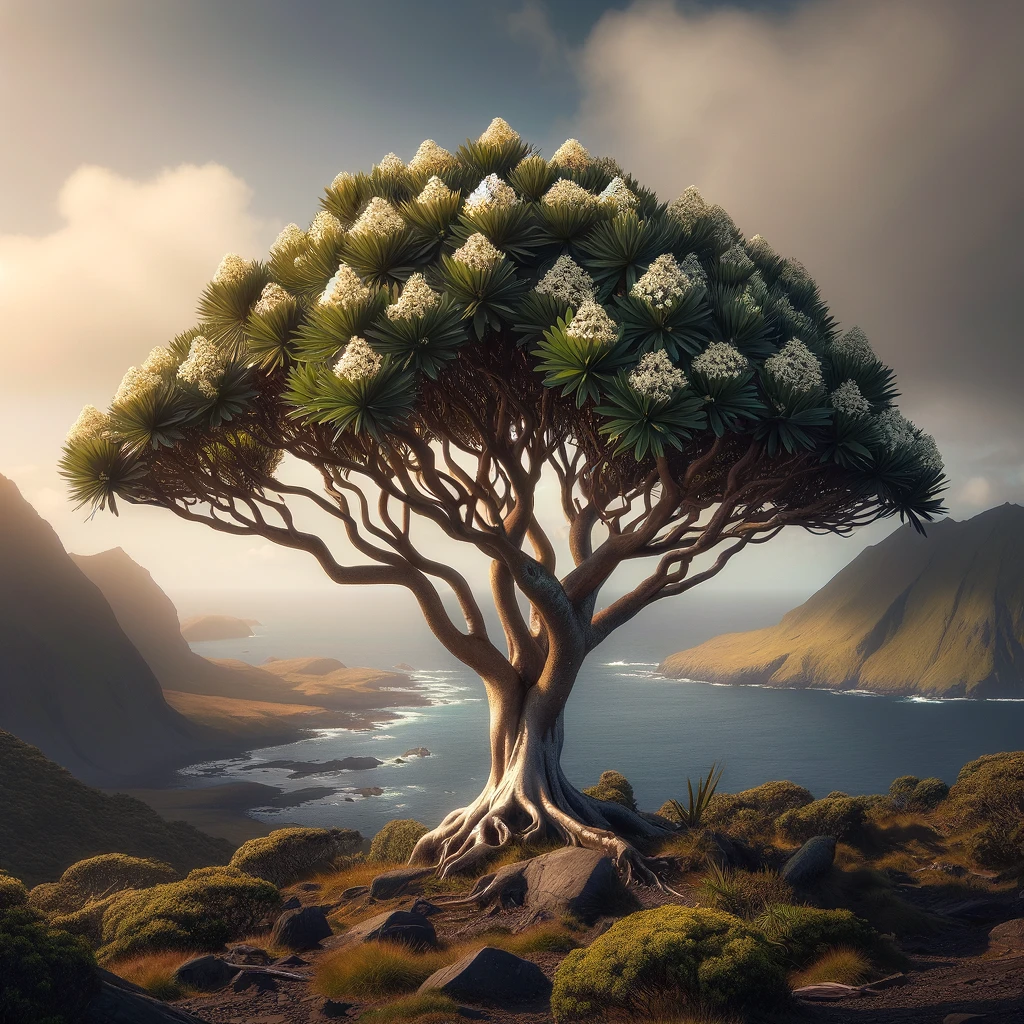In the realm of conservation and biodiversity, the Three Kings Kaikōmako (Pennantia baylisiana) stands as a poignant symbol of both the fragility and resilience of endemic plant species. This rare tree, native to New Zealand’s Three Kings Islands, epitomizes the critical conservation efforts needed to preserve the planet’s unique botanical heritage. With its status among the world’s rarest trees, the Three Kings Kaikōmako’s tale is not just a story of survival but a clarion call for biodiversity conservation.
A Discovery of Rarity
The Three Kings Kaikōmako was discovered on the Three Kings Islands, situated about 55km northwest of the North Island of New Zealand. These islands, isolated and rugged, have become the last refuge for this species, which thrives in its limited and highly specific habitat. The discovery of Pennantia baylisiana brought to light the stark reality of how a single location can be the sole custodian of a species that teeters on the brink of extinction.
Botanical Characteristics
The Three Kings Kaikōmako is a small tree, distinguished by its glossy, dark green leaves and the white, fragrant flowers it produces, which give way to black fruits. Its beauty, however, belies the precarious position it occupies in the natural world. As of the last assessments, the known wild population is alarmingly limited, with efforts underway to cultivate it in botanical gardens and arboreta to ensure its survival.
Conservation Efforts
The conservation of Pennantia baylisiana is a multifaceted endeavor that involves several strategies. Firstly, protecting its natural habitat on the Three Kings Islands is paramount. This includes controlling invasive species that compete for resources and potentially threaten its survival. Secondly, ex-situ conservation measures, such as seed banking and propagation in botanical gardens, play a critical role. These efforts not only help in preserving the genetic diversity of the species but also in researching optimal conditions for its growth and reproduction.
The Role of Science and Community
The survival of the Three Kings Kaikōmako underscores the importance of scientific research and community involvement in conservation efforts. Scientists are exploring the genetic makeup of the tree to understand its resilience and adaptability, which could offer insights into protecting other endangered species. Meanwhile, community engagement initiatives are vital in raising awareness about the importance of preserving such rare species and the broader environmental challenges they represent.
A Beacon of Hope
The Three Kings Kaikōmako is more than just a tree; it is a beacon of hope and a testament to the power of dedicated conservation work. Its story inspires a deeper appreciation for the natural world and the intricate web of life that sustains it. As efforts continue to safeguard this unique species, the Three Kings Kaikōmako stands as a symbol of what can be achieved when humanity commits to preserving the earth’s precious biodiversity.

In the face of environmental challenges, the Three Kings Kaikōmako reminds us of the urgent need to act decisively to protect our natural heritage. Its legacy is a call to action, urging us to ensure that future generations can witness the beauty and complexity of the world’s rarest species. Through sustained conservation efforts, the Three Kings Kaikōmako will hopefully flourish once again, a living testament to the resilience of nature and the human spirit’s capacity to nurture and preserve.
